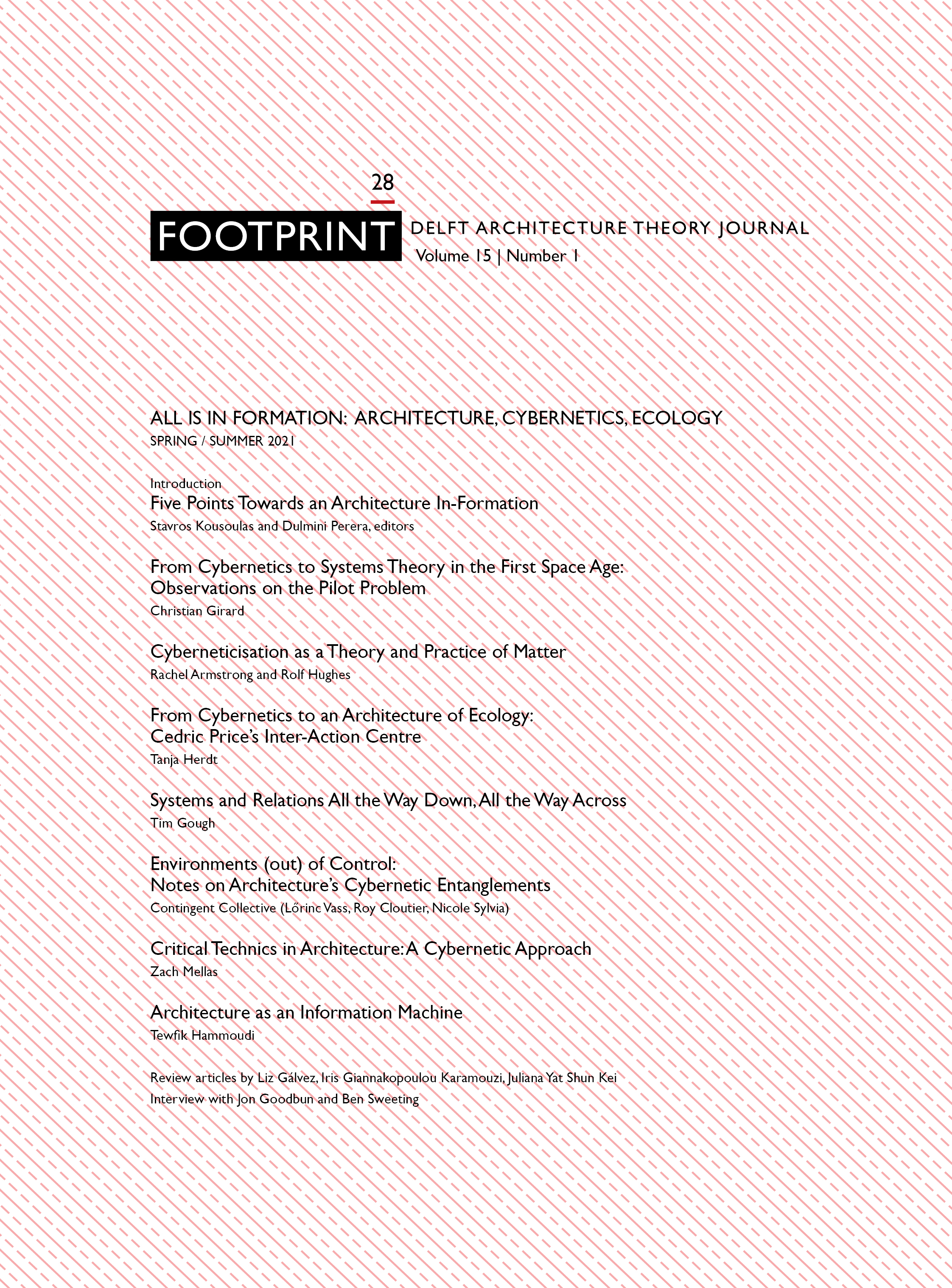Cooked Air
The Kitchen and its Exhalate
DOI:
https://doi.org/10.7480/footprint.15.1.4944Abstract
Since 1996, ASHRAE Standard 62.2 has provided guidelines for residential ventilation. As ventilation becomes increasingly scientised, quantifiable, and reliant on hyper-specific equipment, technical literacy on ventilation has narrowed. The relationship between architecture, inhabitants and air management has become increasingly reliant on ventilation standards, in turn increasing reliance on technical specialists, and creating a gap in ventilation knowledge. Through an examination of ASHRAE Standard 62.2, this essay asks why is it that, as ventilation processes become increasingly measurable, there is an equal tendency to reverse awareness in relation to the human sensation, when the standard itself underlines the reality of both phenomenal and intellectual knowledge towards air quality assessment. Furthermore, if architecture’s domain centres on formal, aesthetic, and material logics, is an expanded literacy on air management necessary to address mechanical equipment within an architectural domain?
References
Allen, Edward & Joseph Iano. ‘Designing Spaces for Mechanical and Electrical Services,’ in The Architects Studio Companion, Sixth Edition. New Jersey: John Wiley & Sons, 2017, 159-263.
ASHRAE, ANSI/ASHRAE Standard 62.2-2019: Ventilation and Acceptable Indoor Air Quality in Residential Buildings. Atlanta: ASHRAE, 2019.
Barber, Daniel. Modern Architecture and Climate: Design Before Air Conditioning. Princeton: Princeton University Press.
Boyer, Dominic. ‘Energopower: An Introduction,’ in Anthropological Quarterly, Spring 2014, Vol. 87, No. 2 (Spring 2014) 309-333.
Banham, Reyner. The Architecture of the Well-Tempered Environment. Chicago: The University of Chicago Press, 1984.
Banham, Reyner. Theory and Design in the First machine Age. USA: The MIT Press, 1980.
Canguilhem, Georges. ‘The Living and its Milieu,’ in Grey Room 03, (Spring 2001), 7-31.
Cooper, Gail. Air Conditioning America: Engineers and the Controlled Environment, 1900-1960, 140-164. Baltimore: The Johns Hopkins University Press, 1998.
Foucault, Michel. The History of Sexuality: Volume I: An Introduction. Trans. Robert Hurley. New York: Pantheon Books, 1978.
Janasoff, Sheila. “A New Climate for Society,” in Theory, Culture & Society 27(2–3), 233 – 153.
Osman, Michael. ‘The Thermostatic Interior,’ in Modernism’s Visible Hand: Architecture and Regulation in America. Minneapolis: The University of Minnesota Press, 2018, 1-43.
Simondon, Gilbert. On the Mode of Existence of Technical Objects (Minneapolis: Univocal, 2017).
Sloterdijk, Peter. Terror From the Air. Cambridge: Semiotext(e), 2009.
Sloterdijk, Peter. Foams: Spheres Volume III: Plural Spherology. Cambridge: Semiotext(e), 2009.
Downloads
Published
Issue
Section
License
Copyright (c) 2021 Elizabeth Galvez

This work is licensed under a Creative Commons Attribution 4.0 International License.
- Authors retain copyright and grant the journal right of first publication with the work simultaneously licensed under a Creative Commons Attribution License that allows others to share the work with an acknowledgement of the work's authorship and initial publication in this journal.
- Authors are able to enter into separate, additional contractual arrangements for the non-exclusive distribution of the journal's published version of the work (e.g., post it to an institutional repository or publish it in a book), with an acknowledgement of its initial publication in this journal.





